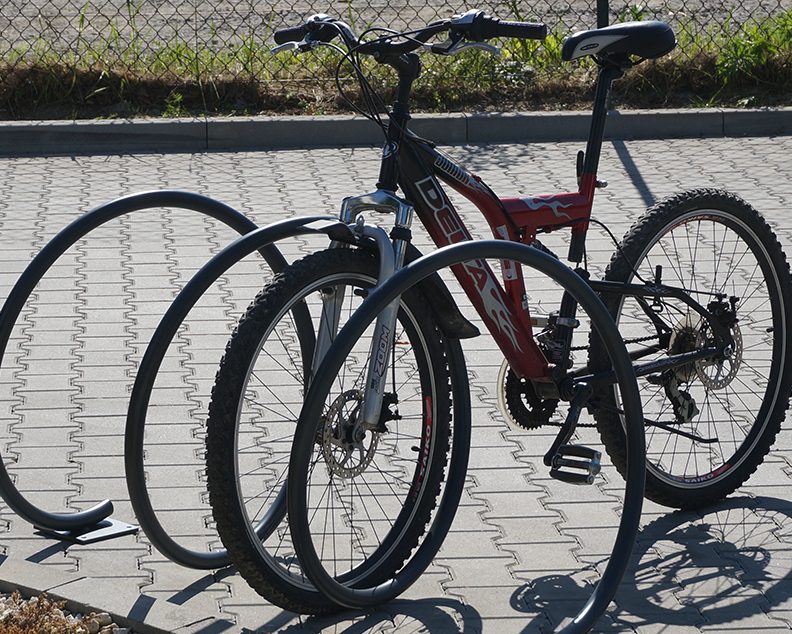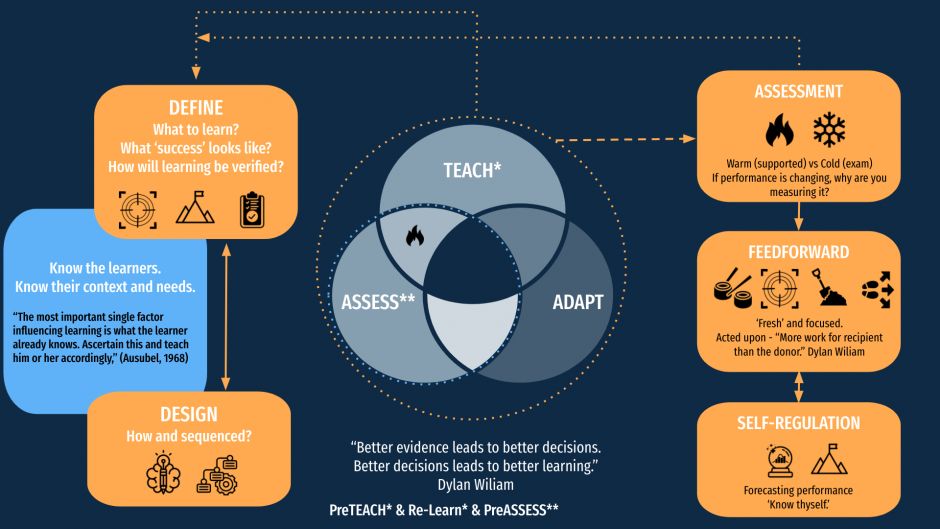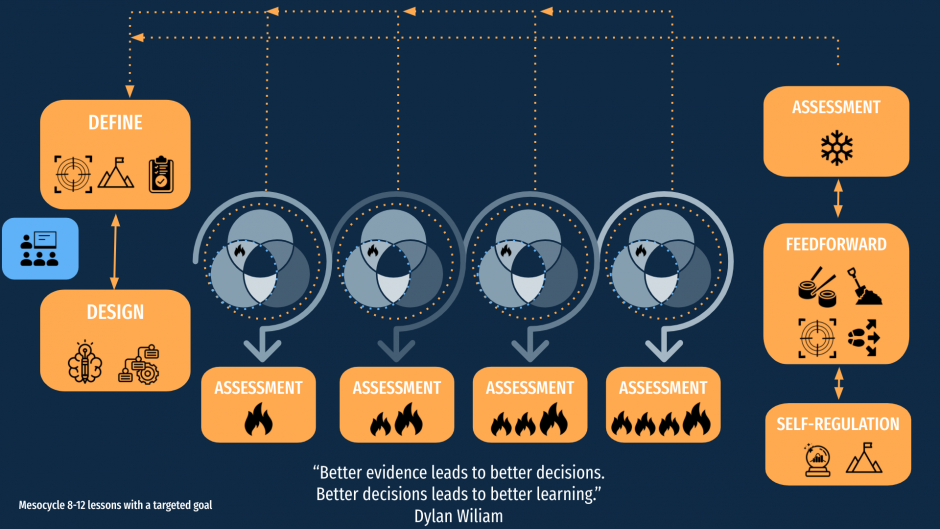Thinking takes time
I have spent far, far too long on this series of posts and I have @davidErogers (and Paul Blake before him) to thank for that. When we worked together, in his office, above his desk, David would build oversized teaching and learning models. Prominently displayed, directly opposite the door as you entered, the model would often be a conversational starting point. Over a period of weeks, occasionally months, he would add and strike through thoughts comments, suggestions, iterating and tinkering with the messy model before presenting his “latest” thinking and cleaned-up model to the leadership team. Why am I sharing this anecdote? Back in March, I accepted a new leadership role with responsibility for all things academic in a local all-through school (if you have not worked or visited an all-through school, I highly recommend it). With no office, no wall space to speak of, but six month to think I dusted off a few of my all-time favourite edu books, guides, tool kits and research papers (listed at the bottom) and reignited my thinking on interplay of curriculum, teaching, learning and assessment on a Google Slide and notebook.
My intention here, is two-fold. To encourage teachers and leaders to value thinking, to let ideas incubate, percolate, to mulch down and to simultaneously use that time for consultation, conversation, critique and iteration. Second, to use the six month organise my own ideas and thinking on the interplay of curriculum, teaching, learning, assessment and planning, accrued over my career. So that when needed, I can share that narrative with colleagues succinctly, with clarity and confidence.
Reflections, changing perspectives and always new experiences
As I moved through senior leadership, “what was taught,” became as important as “how it was taught” (in some part due to the fact that I was not doing the teaching). That was the first significant change in my education perspective. In reflection, it was a gradual shift, accelerated by the move to Vice Principal and it was accompanied a growing concern for assuring the quality of teaching across classrooms, departments and the school. It is a shift I foresee almost all teachers’ experience as they secure their craft, as they develop as teachers, and have space to think beyond the act of teaching and draw on their experiences of teaching. (Hence why early career teachers need support and guidance with planning and rightly worry about the enormity of this task). I would also reflect that over the past two years become more traditional, more pragmatic and a little less progressive, though I do not like the dichotomy of those polarising terms particularly. I’d be interested to know your views? The second perspective change was unexpected, as after twenty years in education, ten years of senior leadership, I found myself back in the classroom as a full time teacher.
As a school leader and headteacher, I have always taught. That said, down from the ivory tower, I was determined to make the most of the opportunity. To road test and iterate various teaching routines, pedagogical and assessment practices, that I have been previously employed or had the privileged to observe or discuss with my teaching colleagues (within the boundaries of my current school’s policies). For context, it was a wonderful school, an oversubscribed, inclusive comprehensive Secondary school with “a student intake that reflects a wonderfully diverse and vibrant local community,” and a forward thinking, experienced, supportive English department (highly recommended), with a philosophy directed towards “Responsive Teaching.” Here Responsive Teaching was described as “relatively short teaching cycles with fortnight responsive teaching tasks (assessments) and whole class feedback lessons.” The practice of Responsive Teaching was very familiar, the content (A Christmas Carol and The Hound of the Baskervilles) meant I had plenty of professional learning to do.
Always New Experiences
Of course, throw in a national pandemic and remote teaching, before returning to teacher wearing mandatory face masks, fixed seating plans, scampering between lessons and arriving to classes already in situ, freezing cold / uncomfortably hot, open-door, open-windows classrooms (every Thursday I had to compete with drum lessons below our window) and thankful-to-be-back-at-school students, made teaching, an even more complex. Add one peculiarity: three times a week, I taught a class twice on the same day*. What students forgot within a school day, or what I had not taught sufficiently well, shocked me.
*Tuesday Year 7 Period 3 and 5. Year 8 Period 2 and 6. A second Year 8 class on Wednesday P3 and 6.
For added insight, I embarked on a mini edventure. For the past two years, I have explored, tested, retested, iterated and been researching the direct and indirect learning gains leveraged by the testing effect, initial conceived as retrieval practice. My research opened up the arena of Cognitive Science and coupled with classroom practice I become more invested in Successive Relearning, “repeated retrieval practice of the same information (with feedback) over multiple, spaced sessions,” Higham et al., (2021). The past sixteen months has been dedicated to the development of a Successive Relearning routine, platform and app – RememberMore.
Understandable, the wider Cognitive Research and principles of Successive Relearning heavily influenced my thinking on teaching, and significantly on planning (backwards planning and assessment), and critically on curriculum definition and design. (On how RememberMore can support both curriculum planning and teaching-instruction). All the time I have been iterating a Successive Relearning model (19 iterations to date, across five schools), I have been well aware that there were far mightier efforts, from some of the giants of education, being shared whilst I have been building this model. Notably the Great Teaching Toolkit and the release of the ECF core induction programme suppliers links. The very fact that each of the four ECF offers is unique, tells you just how complex and messy teaching is. And that teaching teachers to teach, even trickier still.
Overview
What follows is four months thinking and conversations with local colleagues and five experienced teachers from five Secondary schools. The roots of this teaching-instruction model are in Cognitive Science and Successive Relearning, in Responsive Teaching (as described above), Ron Ritchhart’s work on ‘Cultures of thinking’ and Complex Adaptive Systems (the images on this blog all representations of Complexity Adaptive Systems). Lastly, to a lesser degree, the work of Engelmann and “Direct Instruction.” A model that emphasises “well-developed and carefully planned lessons designed around small learning increments and clearly defined and prescribed teaching tasks.” It is based on the theory that clear instruction eliminating misinterpretations can greatly improve and accelerate learning.The model has a bias towards the importance of assessment or evidence in teaching-instruction. The aim was to build an articulated model, in that the “dynamic parts” of “teach-assess-adapt” are flexed by the teacher, to fit with their dynamic context and purpose – the concept of flex and fold is attributed to Dr Sean Warren (@Sean_S_Warren). It is informed by two years full-time teaching at the coal face, having accrued twenty year experience in education, ten years leading curriculum, teaching, learning and assessment. Hence, it leans towards Secondary education, though there has been input from Primary leaders and we recognise it would benefit from the contribution of an experienced classroom management perspective (Classroom design, teacher proximity, student groupings, setting learning expectations, managing difficult situations… there are too many to list).
The first step was to conceive an articulated teaching-instruction model, to then organise and illustrate how to build a scheme of work, employing an articulated teaching-instruction model. To underpin Responsive Teaching and encourage routined Successive Relearning, I introduced the concept of a meso-cycle (borrowed from Sport Science), to the more familiar terms of micro and macro cycles. Recognising that feedback is only worthwhile is acted upon and a growing interest in metacognition and self-regulation.
Teaching-instruction Model 1.0
Lastly, I can’t lie, like many educators I have long admired the work of Oliver Caviglioli @olicav and more recently David Rodger-Goodwin (@MrGoodwin23). Designing, iterating and sharing this model presented an opportunity for me to practice my visual communication skills ahead of my new role and the release of “Organise Ideas: Thinking by Hand, Extending” on Sept 6th. Add to that the “concise and precise” commentary of Peps Mccrea @PepsMccrea, I had planned for the model to be as concise as I could design it. Making is simple, not simpler.
Over a period of the first two months, I organised, designed and re-drafted a rough first teaching-instruction model. A model leaning toward “Responsive Teaching,” (with Whole Class Feedback) and assessment. The starting point was a Ausubel (1968) reference, frequently cited by both Professors Paul A Kirschner and Dylan Wiliam.
If I had to reduce all of educational psychology to just one principle, I would say this: The most important single factor influencing learning is what the learner already knows. Ascertain this and teach him [or her] accordingly.
(Ausubel, 1968)
Next the uncomfortable truth that students do not learn what it is we teach them and an understanding of the difference between performance and learning. Learning refers to relatively permanent changes in knowledge or behaviour. Performance, on the other hand, refers to temporary fluctuations in knowledge or behaviour that can be measured or observed during (or shortly after) teaching-instruction. Simply, performance is short-term and sometime fleeting, whereas learning is long-term. This means that teachers do not know if their students have actually learnt what it is they have taught until after a period of time in which the students do not use or think about the lesson or information.
Over the last two years in particular, I have developed a growing sense of the deferred power of positively framed and reinforced routines for both students (security, confidence, predictability and lowering cognitive load) and teachers and building habits of learning. The model needed to support routines, and in doing so Successive Relearning, and promote powerful learning habits (for example how to independently learn, work in silence, draft, redraft, be curious about vocabulary, how to respond when you hit a road block.).
Finally, I was determined to design a model that could articulate and flex. That could accommodate the fact that classrooms are themselves complex adaptive systems. I have a long standing interest in complexity theory, and to date, I can find no better theory to explore and describe what happens in classrooms, in schools and in education.
Almost from the outset, I found myself organising my ideas over two slides. The first outlined a model for the complex interactions of teaching-instruction (teach-assess-adapt). However not explicitly reflecting learner / classroom management / behaviour. The second, took a step back. Here I outlined a model for planning a series of connected, coherent / sequenced and accumulative meso-cycles. With each meso-cycle representing of sequence of micro-cycles, that are semi-routined. When presented and constructed (in a connected, coherent and accumulative way), the model represents a macro-cycle, scheme or work or topic.
Micro, meso, macro
- Micro-cycle – a lesson (teach-assess-adapt)*
- Meso-cycles – planned assessment and teaching-instruction (connected and coherent)
- Macro-cyle – assessment and scheme or unit of work (accumulative)
Micro-cycle: a singular a lesson (however, a lesson could be made up of a series of adaptable and interchangeable activities or tasks).
Meso-cycles are common in sports training. A meso-cycle represents a series of training sessions designed to accomplish a particular goal. A sequence of lessons, typically a sub-target of the main learning intention. In teaching, that may be a series of 8-10 lessons, designed to accomplish a particular goal. Typically a sub-target of the main learning intention. With a “warm” assessment (assessment for learning) or applied practice within each meso-cycle. Each meso-cycle builds on the previous learning, and each assessment is accumulative (eg includes assessment of the previous learning and current learning in the macro-cycle.
Meso-cycle is defined in part by school and curriculum factors, eg lesson allocation / length.
- Core: Every 8-10 lessons, 2 weeks, 6 meso-cycles per twelve week half term.
- Foundation: Every 8-10 lessons, 4 or 6 weeks, 3 or 2 per meso-cycles per twelve week half term.
Macro-cycle is a series of meso-cycles. A half-term, term, unit of scheme of learning, or academic year.
Where assessment and teaching-instruction informs and feeds back into the definition and design of the curriculum. Of course it does.
Important, I would only ever reverse engineer 60-80% of the knowledge. We may know the destination and what it we want pupils to know and be able to do, it would be foolish to think we know the every step of route at the outset. Second, planning only 60-80% encourage diversions, innovations and adaptations to meet the needs of the learners, the class, in front of you, and not merely the imagined class conceived when planning the curriculum, macro or meso cycle.
For example, when teaching a Travel Writing unit – would any teacher be expected to foresee a pupil knowing much about Kota Kinabalu, the capital of Malaysia’s Sabah state in the northern part of the island of Borneo? Well, this term, it was the former hometown of one of my boarding students. That changed the plan!
Need to know
- Amber – teaching-instruction (teach-assess-adapt)
- Blue – Assessment (accumulative, seen/supported assessment, unseen / exam)
- Line and arrows – dotted (inform), dashed (connect), line (direct relationship)
Hopefully, the titles and most of icons are explanatory, with the exception of the sushi (“feedback is like sushi, clean cut and best when it is fresh”) and clapper board (Students ‘action’).
I will leave this first post here. For you to mull and muse over the two models.
Books, guides, toolkits and papers
- Memorable Teaching and Lean Lesson Planning, Hidden Lives of Learners, Cultures of thinking, How Learning Happens…
- What makes great pedagogy? (2012) National College of School Leadership
- Dylan Wiliam: 9 things every teacher should know – via Tes
- International System for Teacher Observation and Feedback (ISTOF – 2004)
- Top 20 Principles From Psychology for PreK-12 Teaching and Learning
Kyriakides, L., Creemers, B. P. M., & Teddlie, C. (2010). The international system for teacher observation and feedback. In: P.L. Peterson, E. L. Baker, & B. McGaw (Eds.), International encyclopedia of education, 3rd ed., Vol. 3. Oxford, England: Elsevier.
- Symposium: Evaluating Teaching Quality Education Development Trust
- MARGE – A Whole-Brain Learning Approach for Students and Teachers
- What makes great teaching (2014) from the Sutton Trust has six components:
- (Pedagogical) content knowledge (Strong evidence of impact on student outcomes)
- Quality of instruction (Strong evidence of impact on student outcomes)
- Classroom climate (Moderate evidence of impact on student outcomes)
- Classroom management (Moderate evidence of impact on student outcomes)
- Teacher beliefs (Some evidence of impact on student outcomes)
- Professional behaviours (Some evidence of impact on student outcomes)
NSW Department of Education What works best: 2020 update (2020) has eight themes:
- High expectations
- Explicit teaching
- Effective feedback
- Use of data to inform practice
- Assessment
- Classroom management
- Wellbeing
- Collaboration
Great Teaching Toolkit Evidence Review (2020) has 4 Dimensions
Dimension 1: Understanding the Content 17
Dimension 2: Creating a supportive environment 22
Dimension 3: Maximising opportunity to learn 27
Dimension 4: Activating hard thinking 30
- Dunlosky’s Strengthening the Student Toolbox
Successive Relearning
Higham, Philip & Zengel, Bettina & Bartlett, Laura & Hadwin, Julie. (2021). The benefits of successive relearning on multiple learning outcomes. Journal of Educational Psychology.
Ausubel, D. P. (1968) Educational psychology: A cognitive view. New York: Holt, Rinehart & Winston.
Pyc, M. A., & Rawson, K. A. (2007). Examining the efficiency of schedules of distributed retrieval practice. Memory & Cognition, 35, 1917–1927.
Pyc, M. A., & Rawson, K. A. (2009). Testing the retrieval effort hypothesis: Does greater difficulty correctly recalling information lead to higher levels of memory? Journal of Memory and Language, 60, 437–447. doi:10.1016/j.jml.2009.01.004
Pyc, M. A., & Rawson, K. A. (2010). Why testing improves memory: Mediator effectiveness hypothesis. Science, 330, 335.
Pyc, M. A., & Rawson, K. A. (2011) Why is test-restudy practice beneficial for memory? An evaluation of the mediator shift hypothesis. In Journal of Experimental Psychology, 38(3), 737-746.
Pyc, M. A., & Rawson, K. A. (2012). Are judgments of learning made after correct responses during retrieval practice sensitive to lag and criterion level effects?. Memory & cognition. 40. 976-88. 10.3758/s13421-012-0200-x.
Rawson, K. & Dunlosky, J. (2011). Optimizing Schedules of Retrieval Practice for Durable and Efficient Learning: How Much Is Enough?. Journal of experimental psychology. General. 140. 283-302. 10.1037/a0023956.
Rawson, K. A., & Dunlosky, J. (2013). Relearning attenuates the benefits and costs of spacing. Journal of Experimental Psychology: General, 142(4), 1113±1129. https://doi.org/10.1037/a0030498
Rawson, K. A., et al. (2013). The power of successive relearning: Improving performance on course exams and long-term retention. Educational Psychology Review, 25(4), 523-548.
Rawson, K., Dunlosky, J. and Sciartelli, S., (2013). The Power of Successive Relearning: Improving Performance on Course Exams and Long-Term Retention. Educational Psychology Review, 25(4), pp.523-548.
Rawson, K. A., Vaughn, K. E., Walsh, M., & Dunlosky, J. (2018). Investigating and explaining the effects of successive relearning on long-term retention. Journal of Experimental Psychology: Applied, 24(1), 57±71. https://doi.org/10.1037/xap0000146
Burns, Anne & Knox, John. (2011). Classrooms as Complex Adaptive Systems: A Relational Model. 15.





Pingback: Plans, cycles and spirals (part 2) | KristianStill
Pingback: Plans, meso-cycles and spirals (part 3) | KristianStill
Pingback: Prior knowledge helps the rich get richer – Edventures